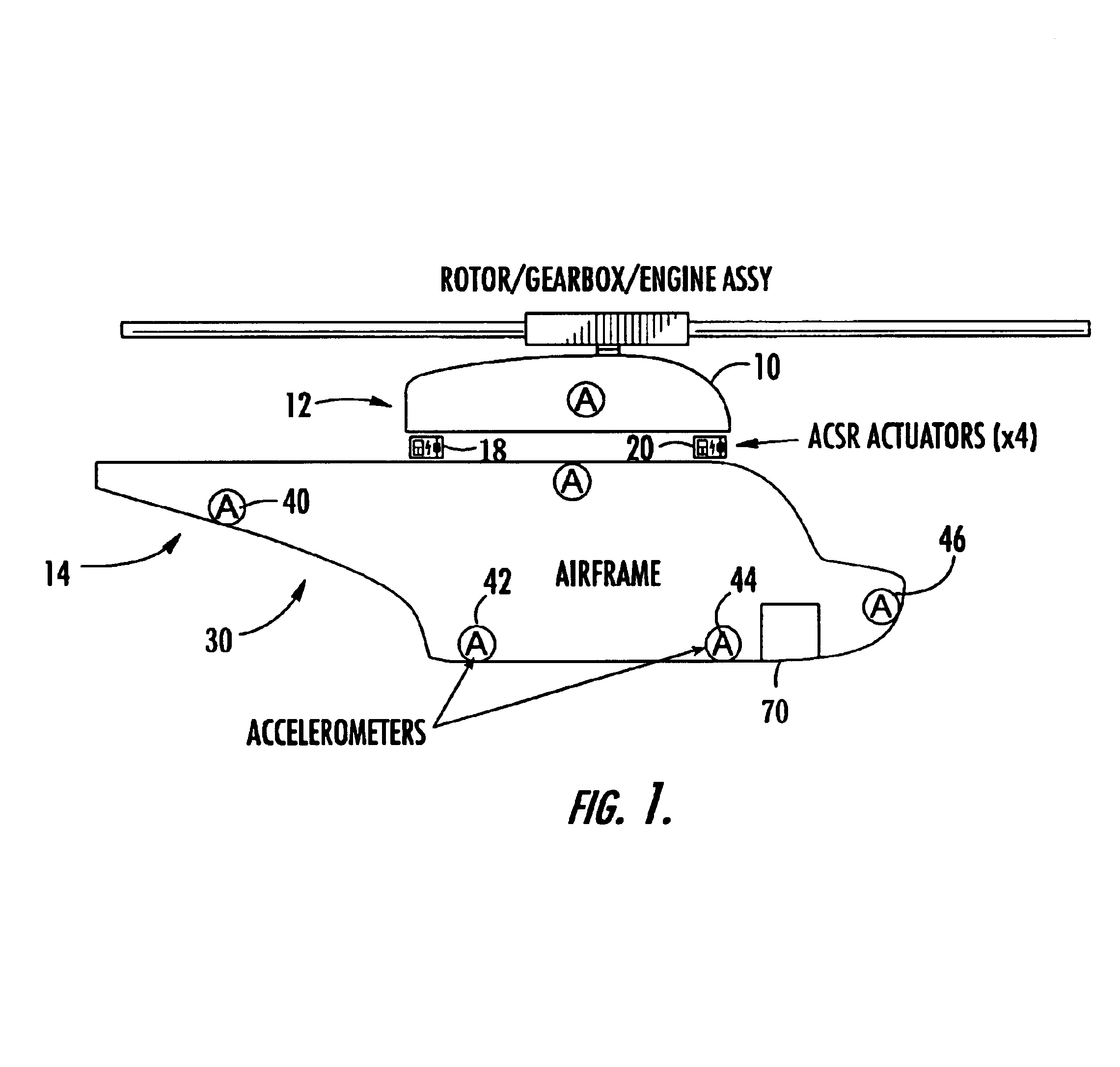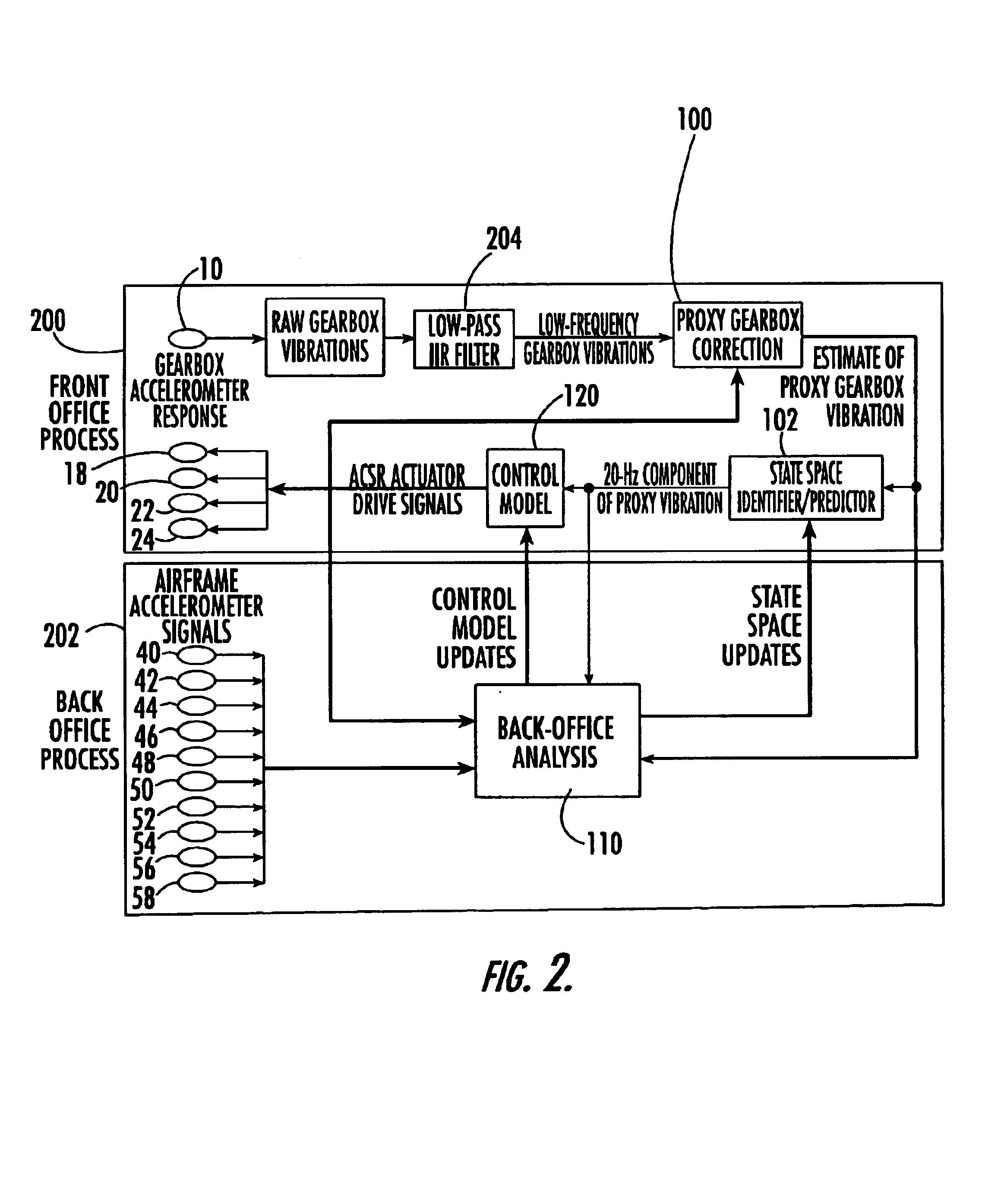Active vibration control system
a technology of vibration control and vibration, applied in the direction of process and machine control, instruments, transportation and packaging, etc., can solve the problems of system failure, material fatigue, unwanted noise, etc., and achieve the effect of better control vibration and better vibration control
- Summary
- Abstract
- Description
- Claims
- Application Information
AI Technical Summary
Benefits of technology
Problems solved by technology
Method used
Image
Examples
Embodiment Construction
[0034]The active vibration control system of this invention features sensor 10, FIG. 1 responsive to a source of vibration. In this example, sensor 10 is an accelerometer attached directly to the gear box of the rotor, gear box, and engine assembly 12 of helicopter 14. Typically four electro-hydraulic actuators are used to impart canceling vibrations to the source of vibrations, engine assembly 12. In FIG. 1, two actuators 18 and 20 are shown between rotor, gear box, and engine assembly 12 and airframe 30, the structure to be isolated from vibrations caused by the rotor gear box, and the engine assembly of helicopter 14.
[0035]In the prior art, no accelerometer is attached directly to the source of vibrations and instead accelerometers 40, 42, 44, and 46 (and others) are used as the input to controller 70 on board helicopter 14 which drives actuators 18 and 20. The reason is that the signal from accelerometer 10 depends not only on the vibrations emanating from source 12, but also on...
PUM
 Login to View More
Login to View More Abstract
Description
Claims
Application Information
 Login to View More
Login to View More - R&D
- Intellectual Property
- Life Sciences
- Materials
- Tech Scout
- Unparalleled Data Quality
- Higher Quality Content
- 60% Fewer Hallucinations
Browse by: Latest US Patents, China's latest patents, Technical Efficacy Thesaurus, Application Domain, Technology Topic, Popular Technical Reports.
© 2025 PatSnap. All rights reserved.Legal|Privacy policy|Modern Slavery Act Transparency Statement|Sitemap|About US| Contact US: help@patsnap.com



